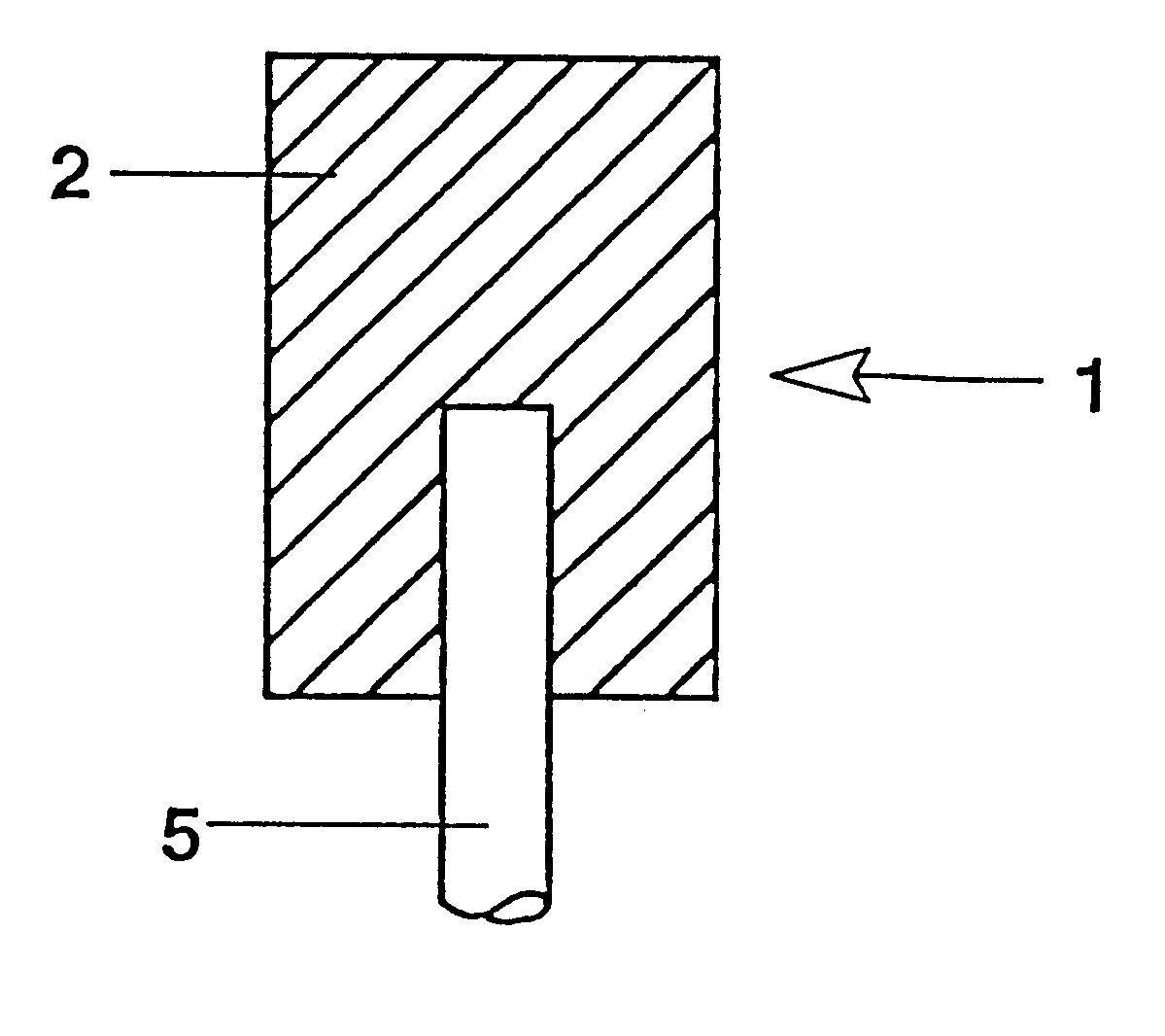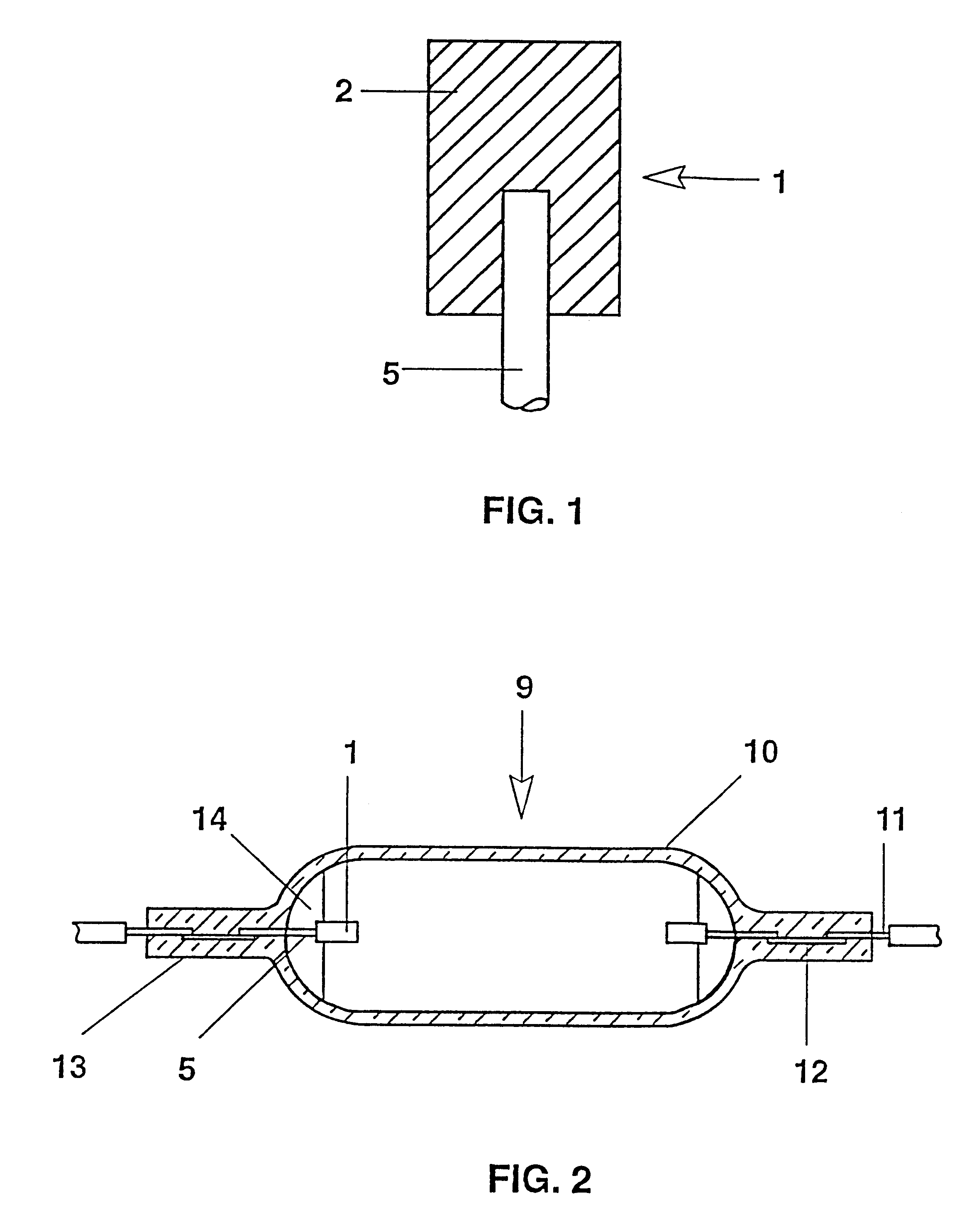Sintering electrode
a technology of sintering electrodes and electrodes, which is applied in the direction of magnetic materials, electrical equipment, vacuum tubes, etc., can solve the problems of undefined properties, irregular shape of pores, and time-consuming production procedures,
- Summary
- Abstract
- Description
- Claims
- Application Information
AI Technical Summary
Benefits of technology
Problems solved by technology
Method used
Image
Examples
Embodiment Construction
It is an object of the present invention to provide a sintered electrode which does not make use of thorium and achieves a relatively long operating life and also a relatively low arc instability.
The sintered electrode of the invention for high-pressure discharge lamps comprises a sintered body of one of the high-melting metals tungsten, tantalum, osmium, iridium, molybdenum or rhenium or an alloy of these metals. In addition, an oxidic dopant known per se, for example an oxide of lanthanum or yttrium, can be added in a amount of up to 5% by weight to the metal or the alloy.
The sintered body is produced from an essentially spherical powder of the metal or the alloy whose mean particle size is from 2 to 100 .mu.m, where the particle size distrbution covers a range from at most 20% below to at most 20% above the mean and from 10 to 40% by volume of the total volume of the sintered electrode consists of pores open to the surroundings.
The pores can be unfilled or contain emitter additiv...
PUM
| Property | Measurement | Unit |
|---|---|---|
| particle size | aaaaa | aaaaa |
| particle size | aaaaa | aaaaa |
| mean particle size | aaaaa | aaaaa |
Abstract
Description
Claims
Application Information
 Login to View More
Login to View More - R&D
- Intellectual Property
- Life Sciences
- Materials
- Tech Scout
- Unparalleled Data Quality
- Higher Quality Content
- 60% Fewer Hallucinations
Browse by: Latest US Patents, China's latest patents, Technical Efficacy Thesaurus, Application Domain, Technology Topic, Popular Technical Reports.
© 2025 PatSnap. All rights reserved.Legal|Privacy policy|Modern Slavery Act Transparency Statement|Sitemap|About US| Contact US: help@patsnap.com


